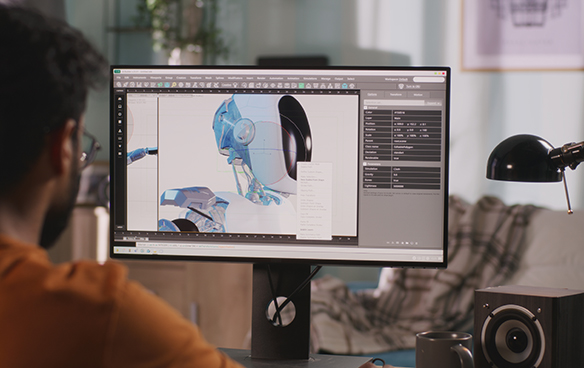
Learning Content Design & Development
Organizations Flourish When Learners Thrive
To achieve ambitious goals, organizations must enable their people to perform at their best. Global competition, hybrid working, and the velocity and complexity of change all present unique challenges for your business. To adapt and respond, you need dynamic, forward-thinking strategies for learning, knowledge, and performance management.
GP’s learning experience division has more than 800 specialists who are solely focused on defining learning strategies and creating learning content and experiences that drive behavior change, transform your business performance, and deliver measurable results.
Learner-Centric Content Design and Development

With more than 50 years of experience in organizational learning, GP Strategies designs, develops, and delivers learning experiences, custom blended curriculums, courseware, certification programs, and assessment criteria designed to support your people and their learning objectives. Our flexible approach to learning content design and development includes shifting from live events to more blended solutions, improving the experience and effectiveness of eLearning, and integrating a more interactive and visual approach to content design and development.
Blending the best practices of traditional design methodologies with the iterative elements of an agile approach, we help you design and implement programs that put learners at the center of the learning experience. As a global leader in instructional learning content design, we use the latest in learning theory, content development tools, and training modes to help create the change you need while accommodating local cultures and languages.
Your Partner in Learning Transformation
For today’s workforce, traditional training doesn’t work well enough. Top-down, course heavy, one-size-for-all learning often creates a fragmented and ineffective learning experience…and disappointing results. New and truly transformative learning is engaging, blended, personalized, and learner-centric; It is social, spaced, measured, and relevant. And it works.
As a partner in your ongoing learning journey, we collaborate with you to deliver integrated, world-class learning solutions—across a range of modalities and technologies, from animation and video to games and gamification and immersive learning—that align with and support your business objectives. Our content development and delivery solutions are an integral part of a holistic learning ecosystem, where all components align to provide a consistent learning experience to enhance results.
Our Learning Content Design and Development Solutions
Unlock the true performance potential of your organization with our unparalleled learning content design and development solutions.
-
Custom eLearning
To enable and support today’s workforce, eLearning is a requirement, and to resonate with your people, your eLearning must reflect your brand, enhance your culture, and address your specific business needs and challenges. -
Blended Learning Strategies
More than ever before, today’s workplace realities and workforce expectations demand Blended Learning Strategies that combine traditional learning tools and content with modern methodologies that deeply engage your learners. -
Games, Gamification, and Play for Learning
With our gamification techniques, we turn learning into a game by incorporating elements like competition, rewards, and progress tracking. This not only makes learning more enjoyable but also encourages you to stay engaged and motivated throughout the entire process. -
Immersive & XR
VR, AR, and 360 immersive video offers you a whole new dimension to the way you connect with your learners to deliver powerful learning. Our unique expertise at the cutting edge of these new channels means we can work together with you to open up new and exciting learning opportunities for your organization. -
Animation
Our experienced team works closely with you to pinpoint your learning goals and specifications to produce solutions that are polished, effective, and creative. -
Video
Video is a core learning delivery medium in today’s connected world, and every organization can benefit from video in its learning mix. Video is a flexible, cost-effective, and powerful medium that can be used to create the right impact at the right time. Storytelling that’s relatable and emotive makes it a powerful tool to drive behavior change for your learners. -
Compliance & ESG
Our Compliance & ESG team serves our clients with a full spectrum of learning solutions, designed to fulfill their unique requirements and optimize their capabilities and resources. -
Learning Measurement and Analytics
Success in proving the effectiveness of learning has been elusive for many organizations. Many don’t know where to begin. Today, leading competitors in every industry are successfully answering vital workforce learning and development questions using the vast datasets and powerful new tools now available.
Get in touch.
Unlock your talent’s potential with us.
Transformation doesn’t happen overnight if you’re doing it right. We continuously deliver measurable outcomes and help you stay the course – choose the right partner for your journey.
Our suite of offerings include:
- Consulting Services | Aligning vision and strategy to deliver integrated and systemic business results to drive growth and change through people.
- Learning Services | Modern learning strategies, content, experiences, and delivery approaches that optimize workforce performance.
- Technologies | An ecosystem of learning and talent tools, systems, platforms, and expertise that enable learning and talent transformation.

Your Talent Transformation Partner








